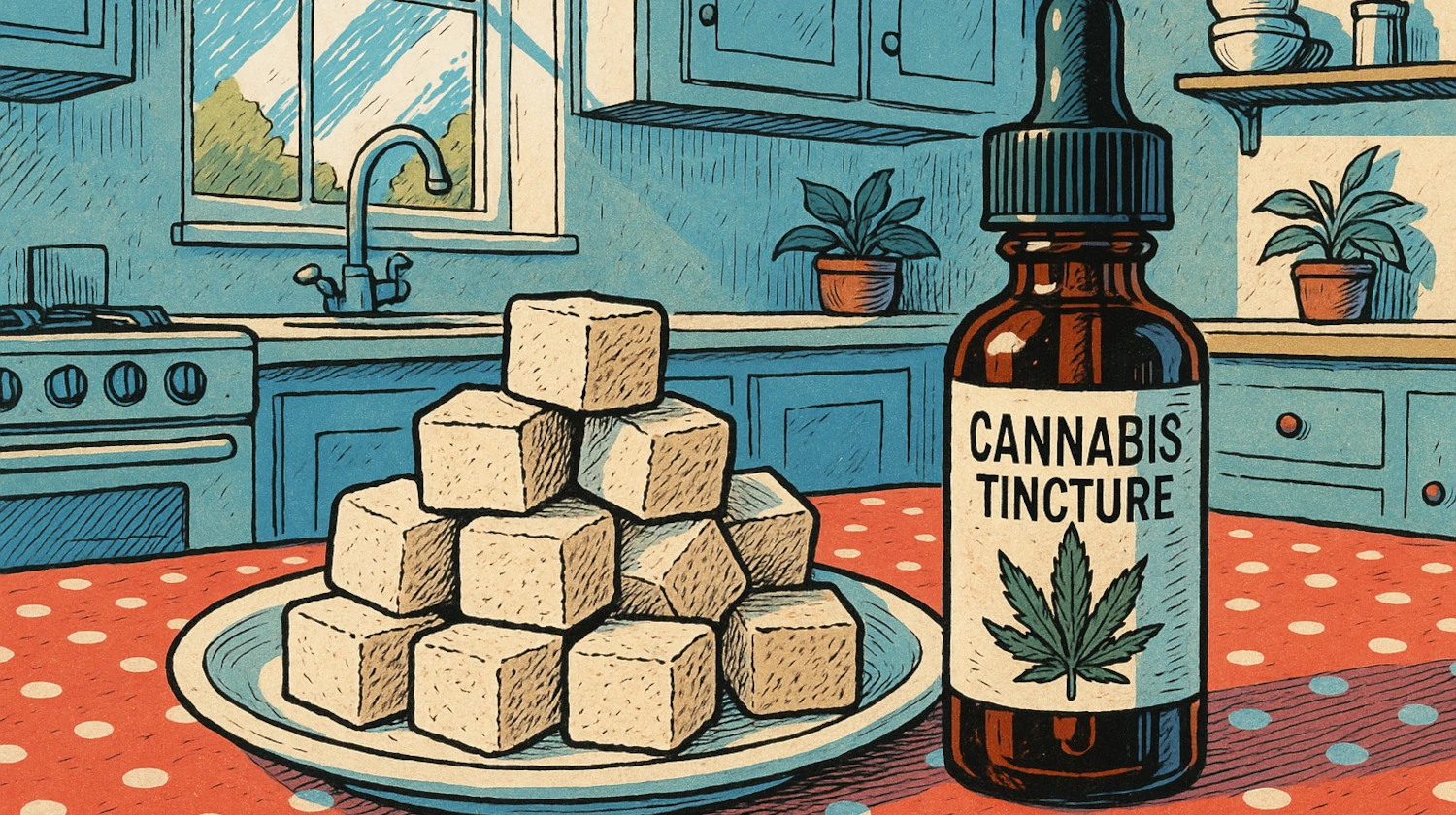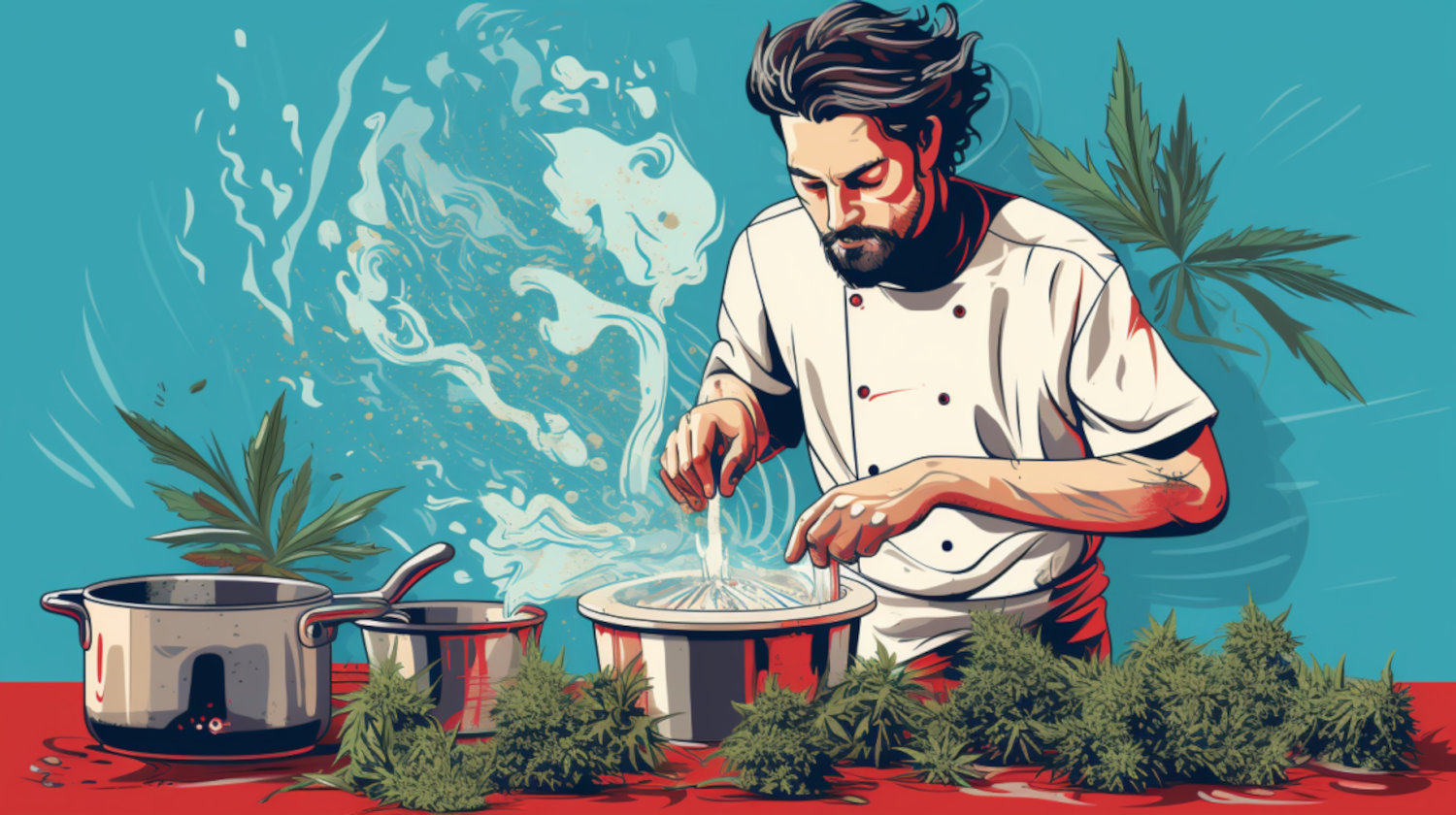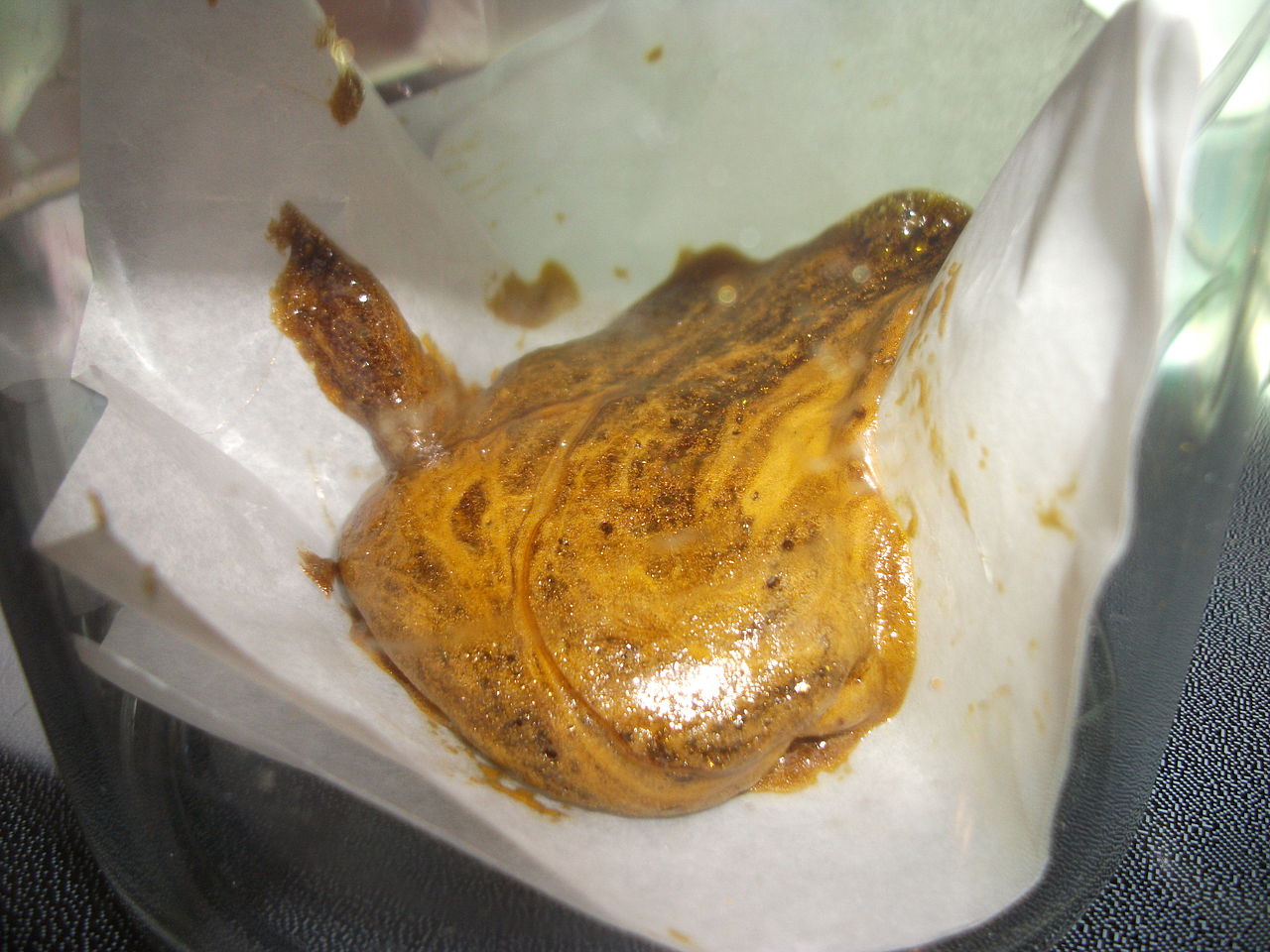In This Article
- What is Cannabis Sugar?
- Cannasugar vs. Sugar Wax
- Bottom Line
- What is “Live” Cannabis Sugar?
- How Live Cannabis Sugar is Made
- Growing Popularity
- Common Mistakes to Avoid When Making Cannasugar
- What You Need to Make Cannabis Sugar
- Ingredients
- Materials
- How to Make Cannabis Sugar at Home
- Step 1: Decarbing Your Weed
- Step 2: Make a Tincture
- Step 3: Infuse the Sugar
- How Much Sugar Should You Use When Infusing with Cannabis?
- Step 1: Know Your Cannabis Potency
- Step 2: Calculate the THC Content
- Step 3: Divide by Servings
- Step 4: Start Low and Adjust
- Conclusion
Key Takeaways About Cannabis Sugar
- Cannabis sugar, or cannasugar, combines cannabis tincture with granulated sugar to create an infused sweetener.
- Cannasugar can be made at home with simple ingredients, but accurate dosing is important.
- Avoid common mistakes such as skipping decarboxylation, using poor-quality cannabis, or overheating during infusion.
Like butter and coconut oil, cannabis-infused sugar is a delicious way of infusing cannabis into your everyday life. However, term “sugar” is also used in reference to cannabis as a type of concentrate or extract.
So, if you're interested in the sweet type of cannabis sugar that you can bake with, you're in the right place. Plus, making it at home is simple and straightforward.
What is Cannabis Sugar?
As an edible, cannabis sugar typically combines cannabis tincture with granulated sugar. White sugar is most commonly used; however, brown sugar can also be used.
When mixed, the cannabinoids from the tincture bind to the sugar crystals, creating a sweetener that blends classic sugary sweetness with subtle cannabis notes.
For clarity, we'll use two different terms to refer to different types of cannabis sugar.
- Cannasugar: cannabis-infused sugar for use in edibles.
- Sugar wax: a cannabis concentrate with a wet, crystalline appearance.
Cannasugar vs. Sugar Wax
Similar names, but totally different products.
Put simply: Cannasugar belongs in the kitchen. Sugar wax is best suited for a dab rig. While both share the word “sugar,” they are very different products. Cannasugar is a kitchen infusion, while sugar wax is a cannabis extract.
There are several methods for making sugar wax. Some are relatively safe, while others are not suitable for at-home production.
For example:
- Rosin wax is considered solvent-free because it uses only ice, heat, pressure, and cannabis flower. This method can be done safely at home.
- BHO sugar wax is made with butane hash oil, a volatile solvent that poses a high risk of explosion or fire if mishandled. Safe and legal production requires a license and a professional laboratory.
Bottom Line
You can safely create cannasugar or even rosin wax in a home setting. However, BHO sugar wax should be left to licensed professionals.
What is “Live” Cannabis Sugar?
The “live” extraction process is widely regarded as one of the most effective ways to preserve a plant’s natural compounds after harvest. By skipping the traditional drying and curing process, this method maintains more of the flower’s original terpene and cannabinoid profile.
How Live Cannabis Sugar is Made
Live sugar begins much like rosin or sugar wax, but with one major difference: freeze-drying.
As soon as a cannabis plant is harvested, it is flash-frozen in a freeze-drying unit, rather than undergoing the usual drying and curing process. There, it stays frozen until extraction begins.
This approach results in a concentrate with a honey-like consistency, rich in aroma and flavor.
Growing Popularity
Once considered a niche production method, live cannabis products have become an important segment of today’s concentrate market.
Producers now use live techniques in both solvent-based and solvent-free extractions to create a wide variety of products, including:
Common Mistakes to Avoid When Making Cannasugar
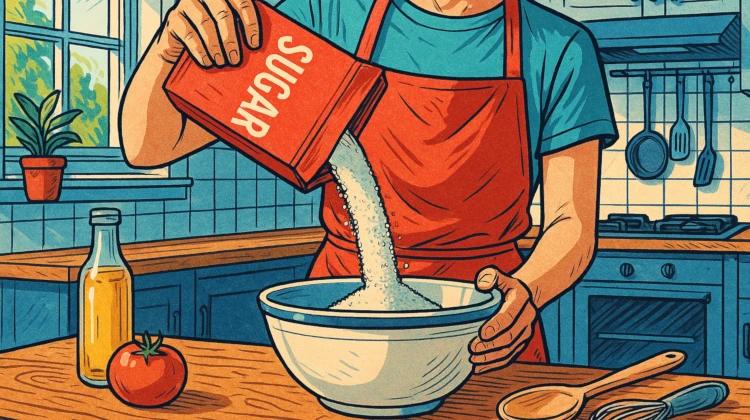
Cooking with cannabis can be a meticulous process, and new canna chefs are bound to make a few mistakes along the way. To improve your results, watch out for these common pitfalls:
- Using subpar cannabis. A classic saying in cannabis production is “quality in, quality out.” If your flower is old or low in quality, your sugar may not deliver the desired potency or effects.
- Over-grinding the flower. Cannabis should be broken into small pieces, not ground into dust. Over-grinding can make it harder to separate plant material from the final sugar.
- Skipping decarboxylation. Heat is needed to convert THCA into active THC, the cannabinoid most associated with intoxicating effects. If you skip this step, your cannasugar may not deliver the results you expect.
- Improper dosing. Using too much cannabis can make your sugar overwhelmingly strong, while too little may produce little to no effect. An edibles calculator can help you better estimate potency.
- Poor temperature control. Overheating during decarboxylation or infusion can cause the loss of cannabinoids and terpenes. In some cases, extended heating may also convert THC into CBN, a compound linked to heavier sedating effects.
What You Need to Make Cannabis Sugar
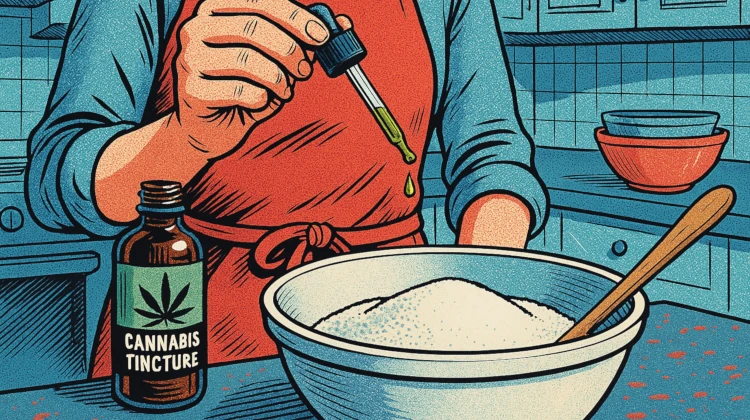
Ingredients
To make cannasugar at home, you’ll need the following ingredients:
- Dry cannabis flower
- White granulated sugar,
- High-proof alcohol, as close to 190-proof as possible (check legality in your area)
Materials
Before you get started, gather these materials:
- Mason jar with lid
- Cheesecloth or coffee filter
- Bowl
- Shallow baking sheet
- Glass baking dish
- Breathable fabric (enough to cover a glass baking dish)
- Oven or toaster oven
- (optional) A grinder, or a tool to break up the flower
- (optional) Parchment paper
How to Make Cannabis Sugar at Home
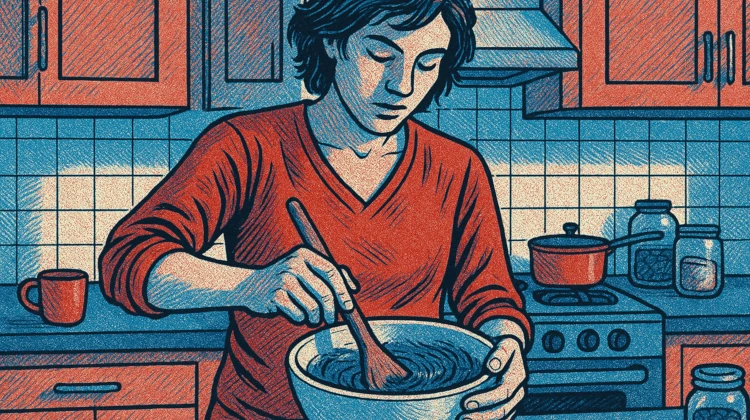
Cannasugar can be made in a few different ways. Below is a classic recipe for beginners.
Step 1: Decarbing Your Weed
The first step in any infusion process is to decarb your cannabis flower.
- Grind your cannabis. You can use a grinder, or you can do this by hand. Make sure the nugs are broken down into a fluffy, coarse-like pile (and not ground into dust). It’s fine to have a few cannabis sugar leaves (the smaller leaves on the nugs) intact.
- Preheat your oven to 250°F.
- Place the ground cannabis on the baking sheet.
- Insert the baking tray into the oven for 30 to 40 minutes.
- Take the cannabis out of the oven. Let it cool.
- Turn off the oven.
Step 2: Make a Tincture
Before you can infuse the sugar, you’ll need to make a tincture using the decarbed weed.
- Place the cannabis into a mason jar. Ensure there is sufficient space for the alcohol.
- Fill the jar with high-proof alcohol. You’ll want to cover the flower material and then some. An eighth ounce of dry cannabis flower will need anywhere from 1-2 cups of alcohol. The ratio you use will affect the potency of the final product.
- Seal the jar with a lid. Shake the jar every 5 minutes for the next 20 minutes. Now, uncap the jar.
- Place a cheesecloth over the mouth of the jar. Pour the now-infused alcohol through the cheesecloth or coffee filter and into a bowl.
- Save the alcohol. You’ll need the now-infused alcohol to infuse the sugar. You can discard the strained plant material or save it for other uses, like topicals.
Step 3: Infuse the Sugar
- Place the sugar into a glass baking dish.
- Slowly add the tincture (the infused alcohol) to the sugar. Stir as you add the tincture. The amount of sugar and tincture you use is up to you, but the final product should resemble wet sand.
- Cover the glass dish with breathable fabric. Store in a safe location out of reach of children and pets.
- Let the mixture dry. The drying process typically takes 48-72 hours, although it may take longer. Stir the mixture every few hours.
- Wait for the mixture to resemble real sugar. Check that the mixture is completely dry.
- Store the sugar in an airtight container until you are ready to use it.
How Much Sugar Should You Use When Infusing with Cannabis?
The amount of sugar you use depends on the potency you want in your edibles. Professional kitchens have precise testing tools, but at home, you can estimate using an edible calculator or a little bit of math.
Step 1: Know Your Cannabis Potency
- Weigh your cannabis flower.
- Check the THC percentage on the label (or use an estimate if unlabeled).
Example: 6 grams (6,000 mg) of cannabis at 20% THC.
Step 2: Calculate the THC Content
Multiply the weight of the flower by the THC percentage:
- 6,000 mg × 0.2 = 1,200 mg of THC total in your recipe.
Step 3: Divide by Servings
Next, divide the total THC by the number of servings or teaspoons of sugar you plan to use. This gives you an estimated dose per serving.
Step 4: Start Low and Adjust
Edibles affect everyone differently, so it’s safest to begin with a small dose.
- Typical dispensary edibles contain 5 to 10 mg THC per serving.
- Newer consumers may prefer to start with as little as 2.5 mg THC. Consumers' experiences will vary.
Conclusion
Making cannabis sugar is simple way to make an infused ingredient you can add to plenty of other meals, beverages and baked goods. If you want to save time making future batches of cannasugar make a large batch of tincture and store it it safely in the fridge. Alcohol based tinctures can be stored for several months up to a few years. If you’re interested in making your own wax concentrate at home, start with our primer on how to make wax and budder.
The information in this article and any included images or charts are for educational purposes only. This information is neither a substitute for, nor does it replace, professional legal advice or medical advice, diagnosis, or treatment. If you have any concerns or questions about laws, regulations, or your health, you should always consult with an attorney, physician or other licensed professional.

